Season and Care for your Mexican Comal
A carbon steel comal is a Mexican kitchen essential that’s been passed down through generations! With proper care, it becomes a trusted companion in the kitchen, yielding excellent results every time. It’s a reciprocal relationship – care for it, and it will care for you!
Get the Most Out of Your Comal: Cleaning & Maintenance Tips for Delicious Mexican Dishes.
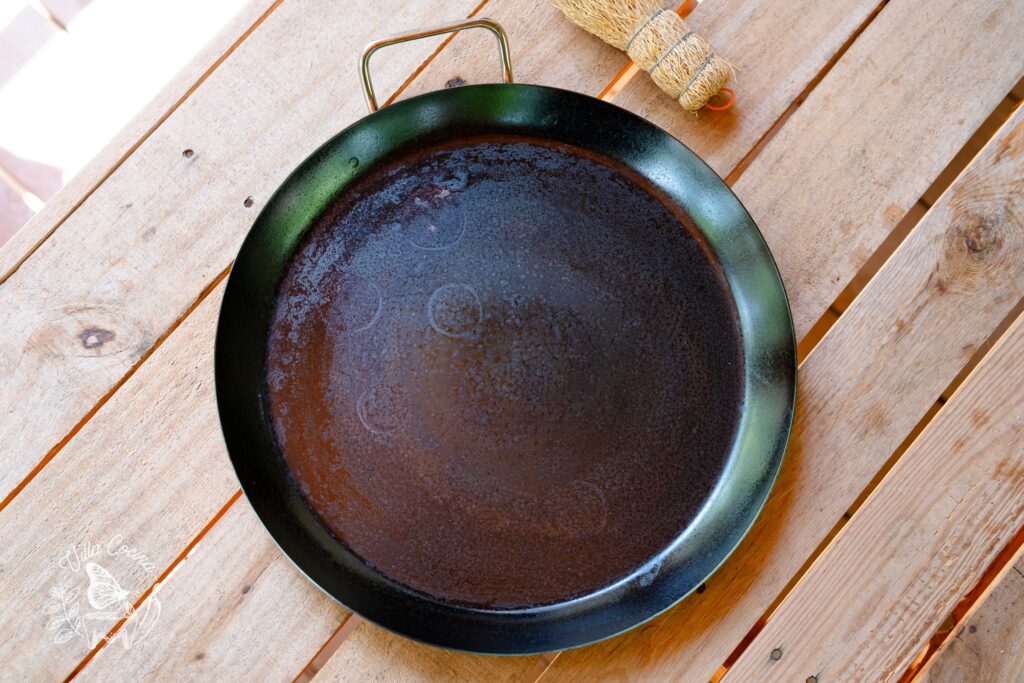
Seasoning creates a natural non-stick surface, making cooking easy and efficient. With each use, it improves, distributing heat perfectly for even cooking and a beautiful color. Durable and heat-resistant, it’s perfect for cooking tortillas, roasting, and more.
In Mexico, two traditional types of comales reign supreme: carbon steel and clay. Growing up in Michoacán, I’ve seen more carbon steel comales in use, while clay ones are deeply cherished in Oaxaca, Chiapas, and Yucatán, where they remain an integral part of daily life. The truth is, both types have been treasured for generations!

Every day, women across the country set up their comales, just as their ancestors did, to prepare fresh tortillas for sale or to nourish their families with hearty, homemade meals. In fact, in rural areas, the traditional ways persist, with people still preferring to cook outdoors over an open flame, fueled by firewood, and a comal perched atop.
Seasoning Your Comal: A Step-by-Step Guide
Before using your new comal, it’s essential to season it to bring out its natural non-stick properties and protect the carbon steel.
Always start by checking the manufacturer’s instructions, as some comals may have specific requirements. For example, the beautiful comal I own, from Made in by Masienda, can only be used on a gas stove and has temperature guidelines for use and cleaning.
To season your comal, follow these steps:
- Wash the comal with warm water (as warm as you can handle), soap, and a non-abrasive brush or sponge.
- If your comal is brand new, this is the only time you should wash it with soap. However, if you’re re-seasoning your comal, avoid using soap altogether.
- Pat it dry with a kitchen towel, ensuring it’s completely dry to prevent rust.
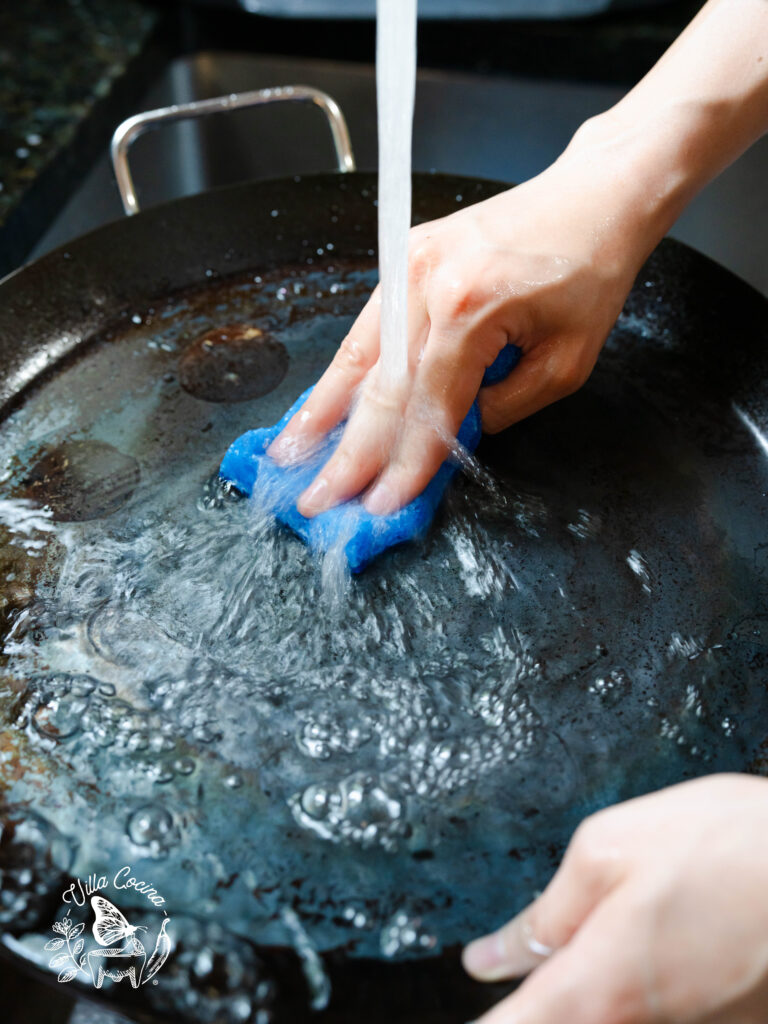
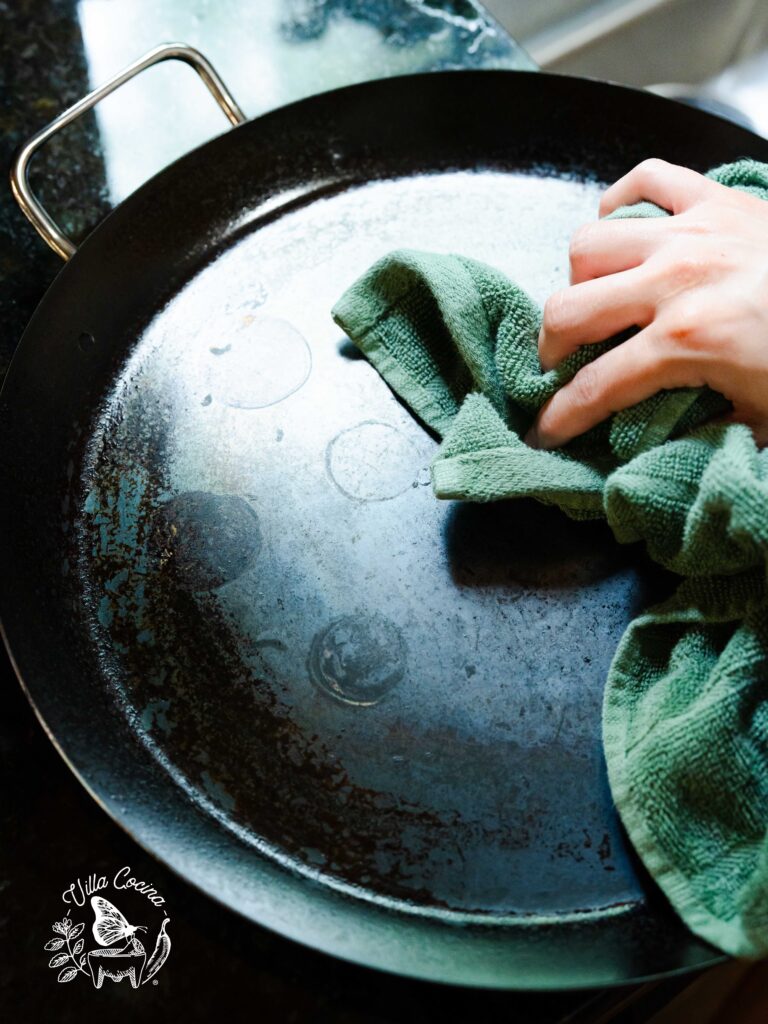
- Place the comal over medium-low heat for 3-4 minutes to ensure it’s completely dry and free of moisture. Turn off the heat.
- Drizzle a few drops of high smoke point oil (like avocado oil) with a neutral flavor onto the cooking surface. Use a paper towel to spread and evenly apply a thin, uniform coat. Be cautious of the hot surface and remove excess oil with additional paper towels.
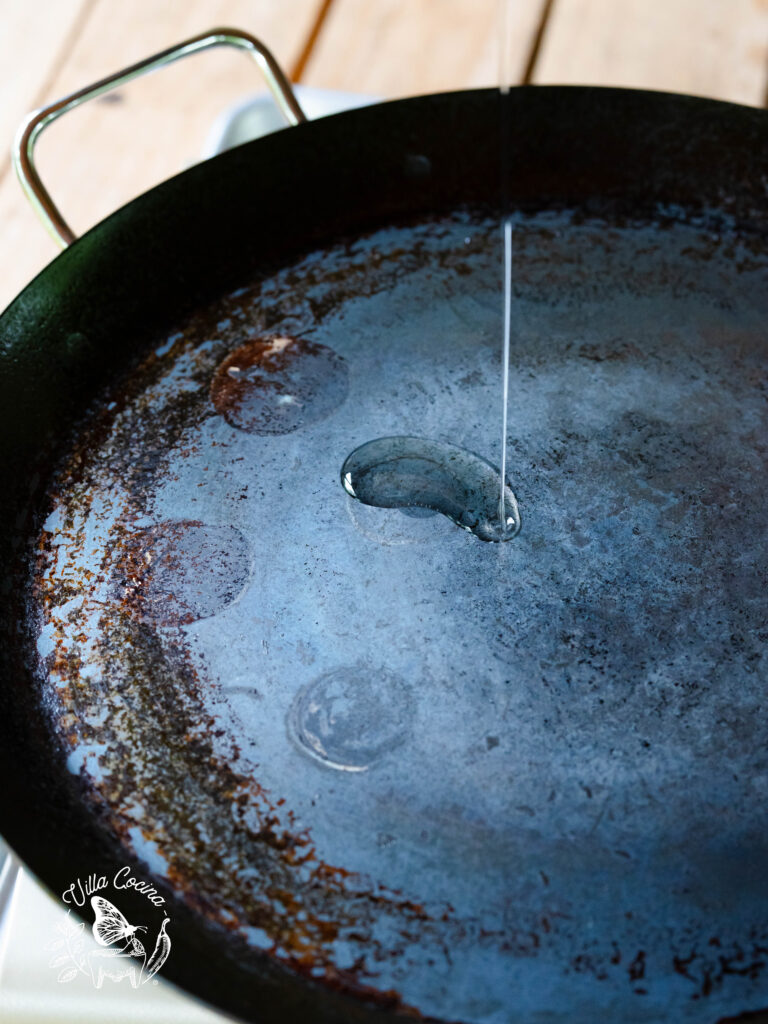
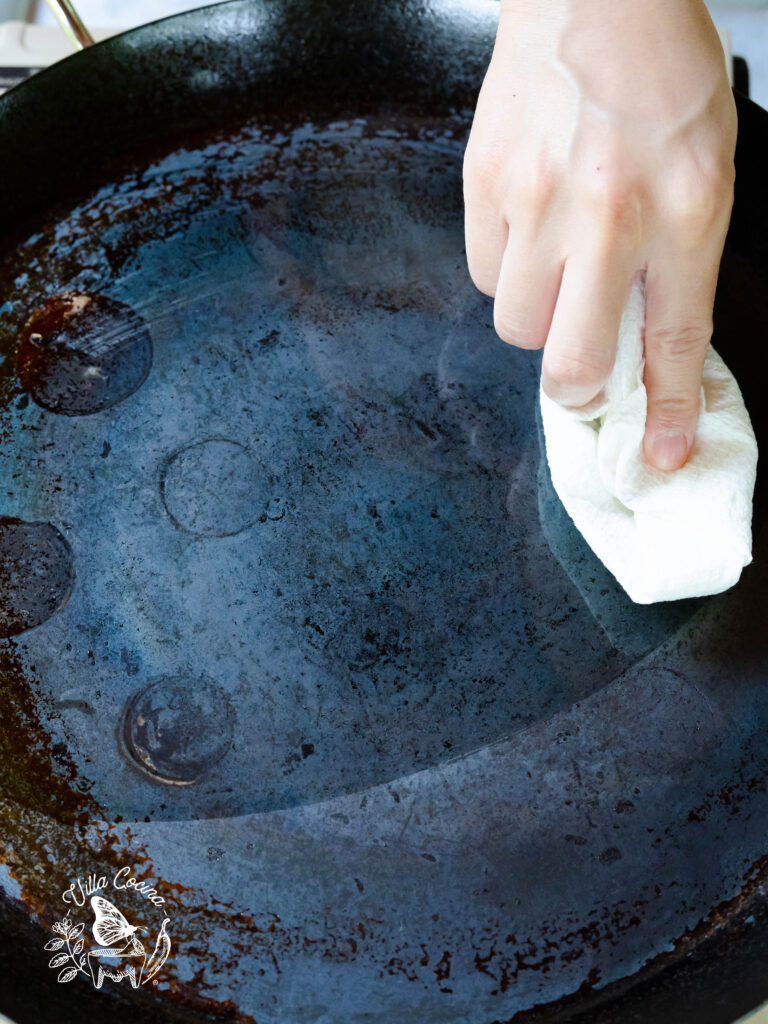
- Preheat the oven to the smoke point of the oil you’re using (e.g., 500°F for avocado oil). Place the comal upside down in the oven with a sheet pan underneath to catch any drippings, and let it season for 1 hour.
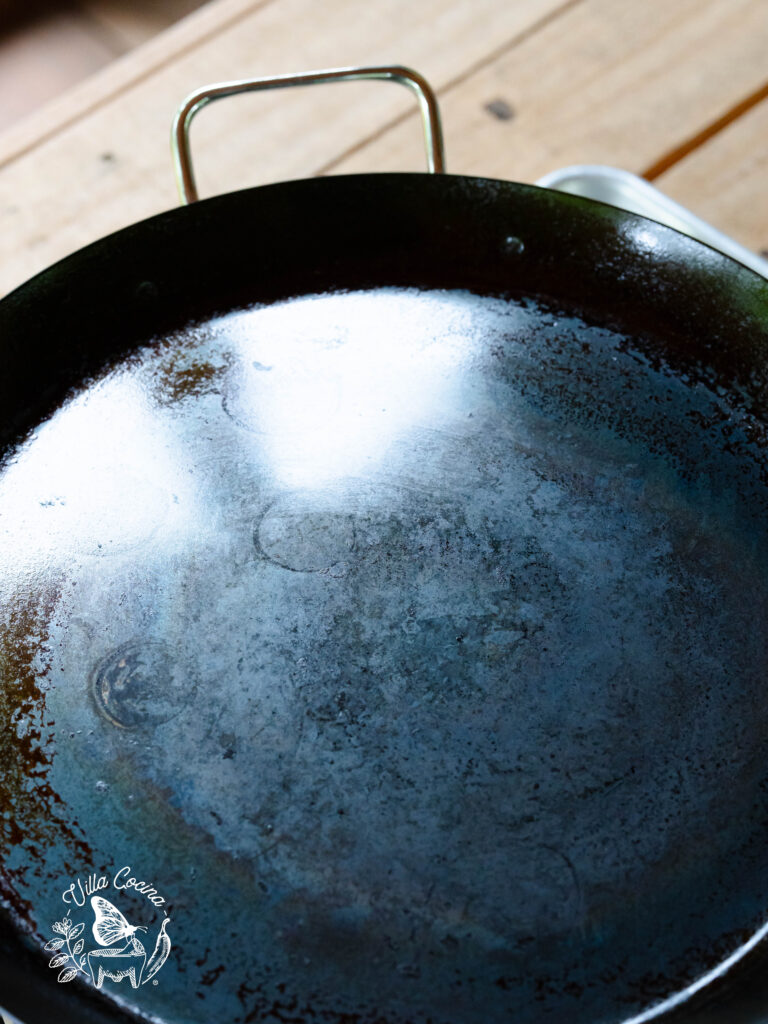
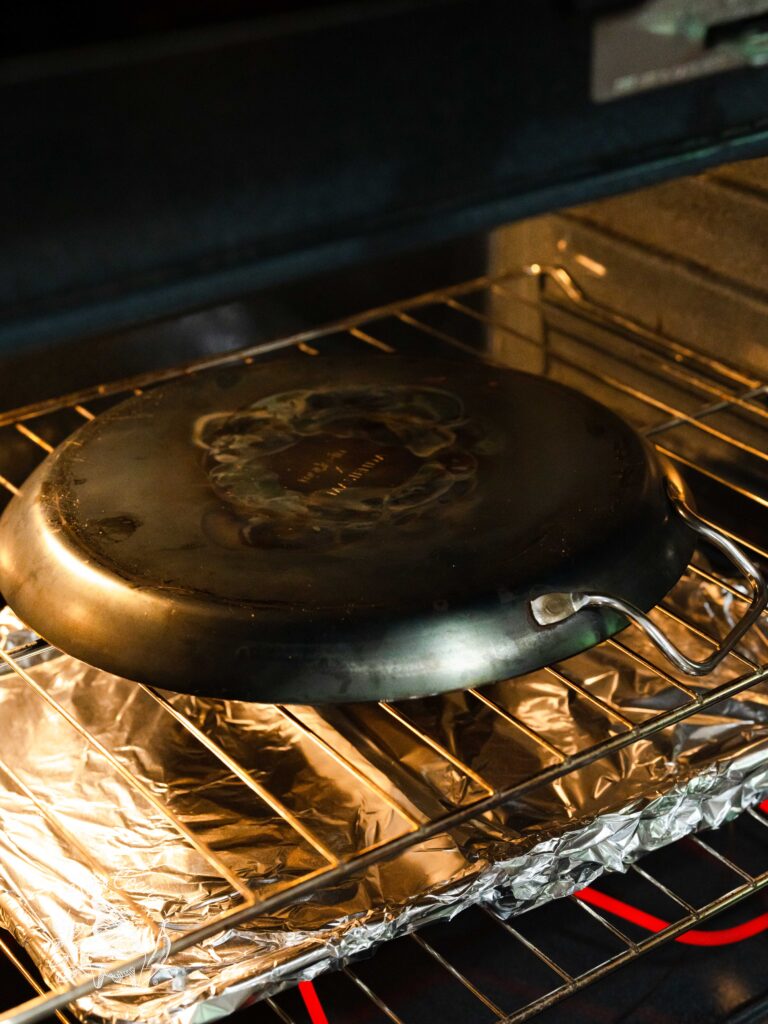
- After 1 hour, turn off the oven and let the comal cool completely inside the oven before removing it. You’re now ready to cook with your seasoned comal!
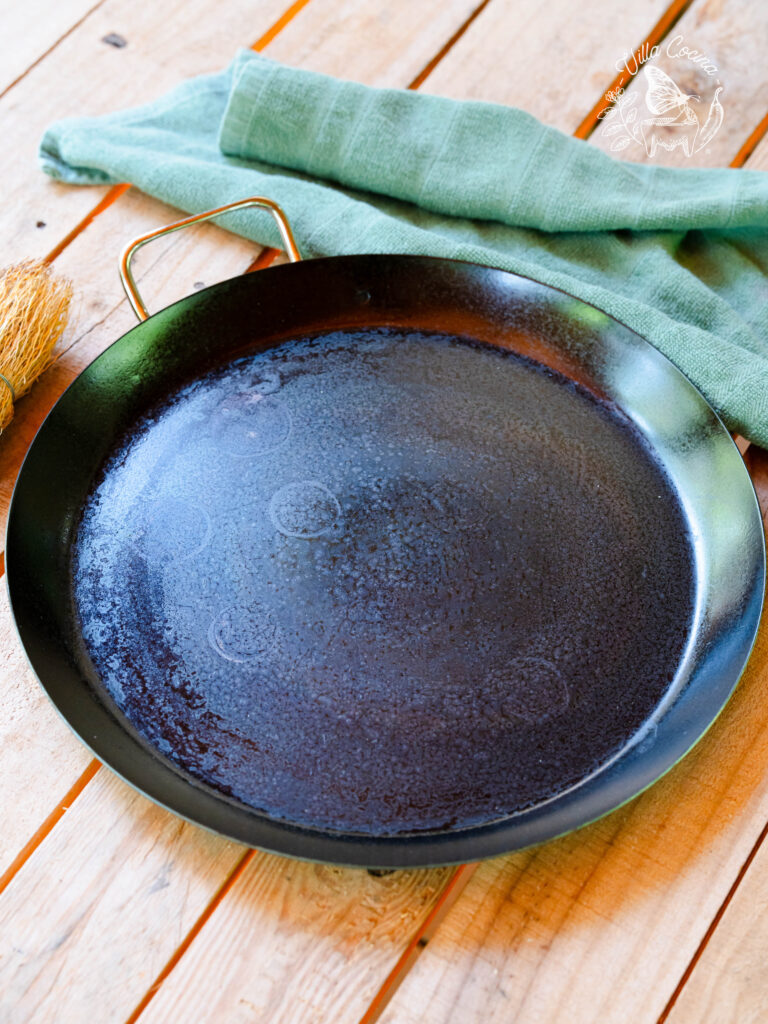
- If food starts sticking or the non-stick properties wear off, simply re-season your comal to restore its performance.
Cleaning and Maintenance
After seasoning, regular cleaning and maintenance are essential to preserve the benefits of your comal. To maintain its non-stick surface and prevent food residue buildup, follow these tips:
Work with the comal while it’s still slightly hot, as this will make cleaning easier, but only if you’re comfortable doing so. If not, warm will also work well. Be cautious not to burn yourself.
Easy Cleaning
If the comal is relatively clean and not too much food is stuck to it, simply wipe it down with a paper or kitchen towel.
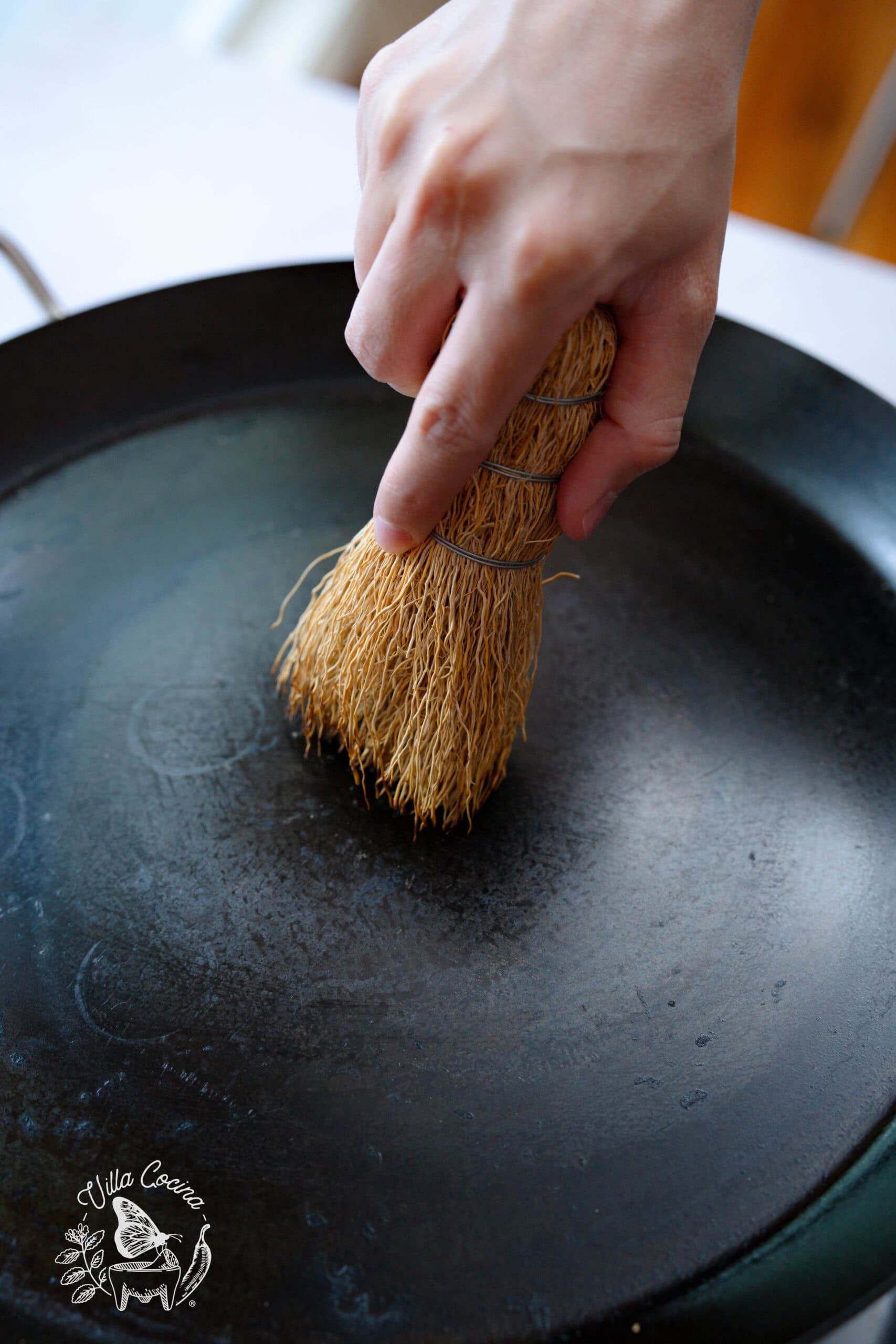
I recommend using an escobeta, a small, handheld brush made from natural fibers like corn husks or roots. It’s perfect for brushing away leftover bits of tortillas and other food residue.
Finish by applying a thin layer of oil to the warm comal using paper towels. Next, let it cool down completely before storing it in a dry place.
Removing Stuck-on Food
If food is stubbornly stuck to your comal, a common issue after roasting ingredients, don’t worry! Start by gently scraping off as much of the burnt residue as possible using an escobeta, a kitchen cloth, or a paper towel.
Next, add about a tablespoon of oil with two tablespoons of coarse salt, to the comals surface.
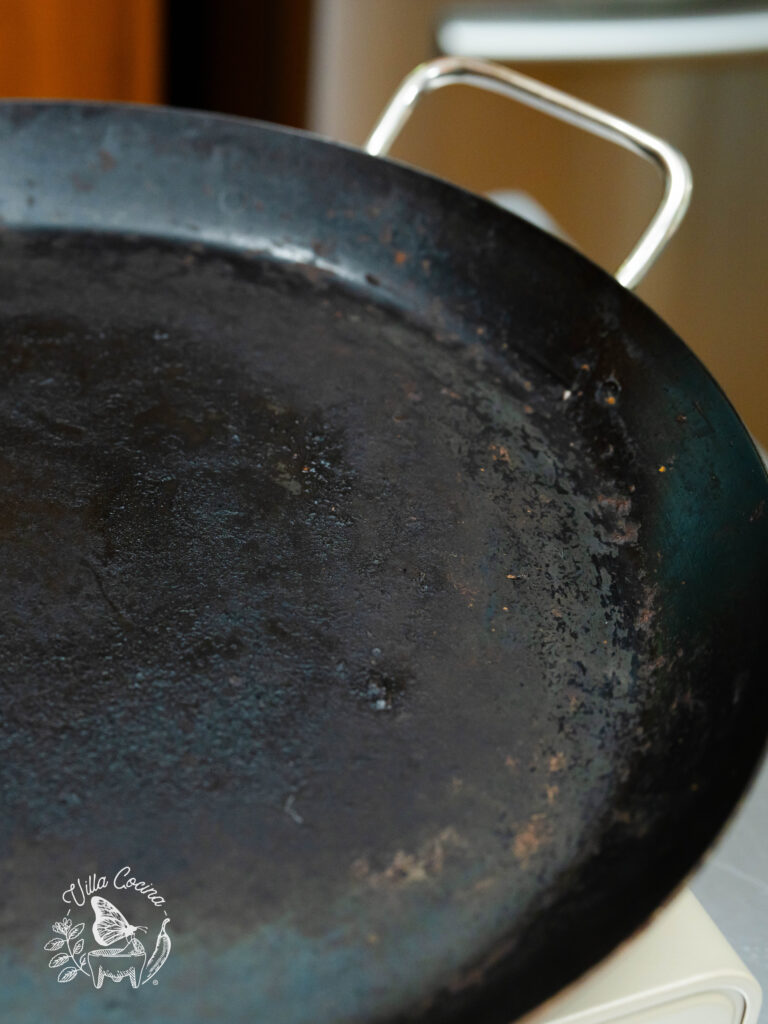
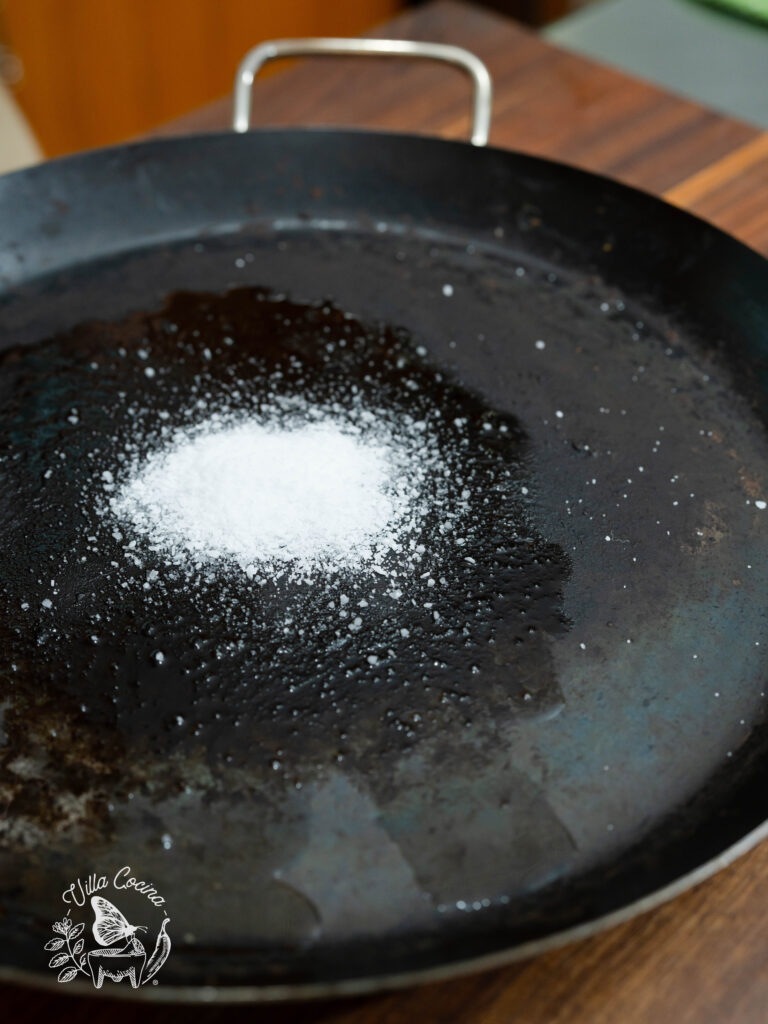
Use a paper towel to scrub until everything loosens. Discard the salt once it becomes dirty and add more salt and oil for a deeper scrub if needed.
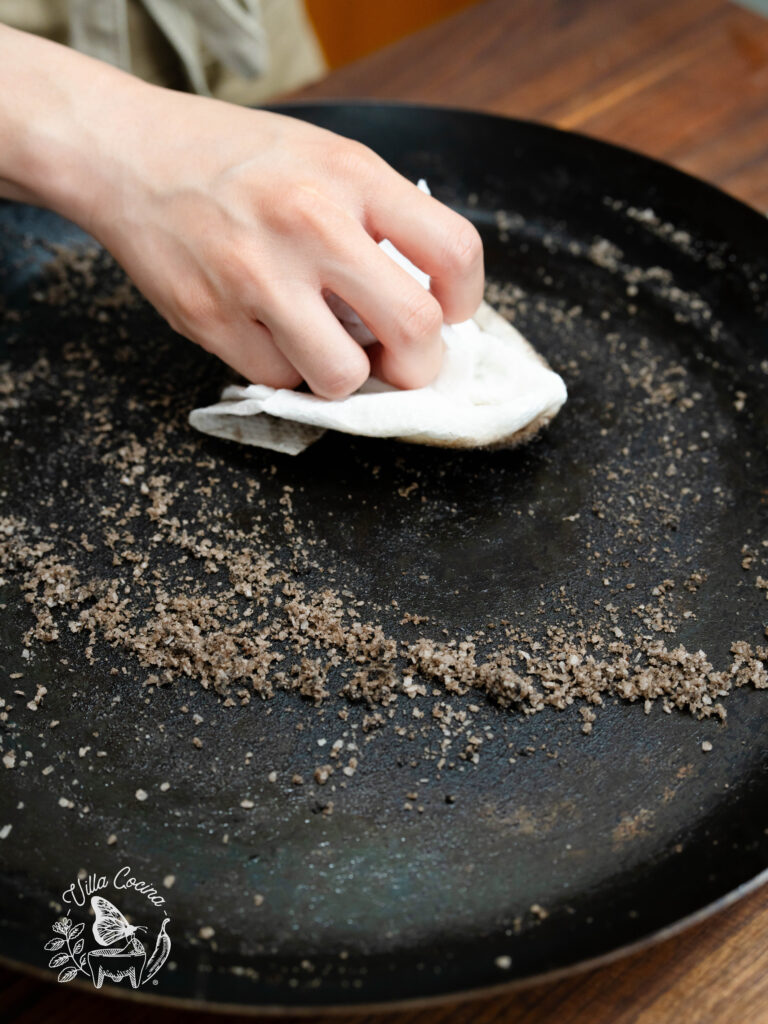
Rinse clean, towel dry, and place the comal over medium-low heat to dry completely. Turn off the heat and apply a thin oil coating. let it cool, and store it away.
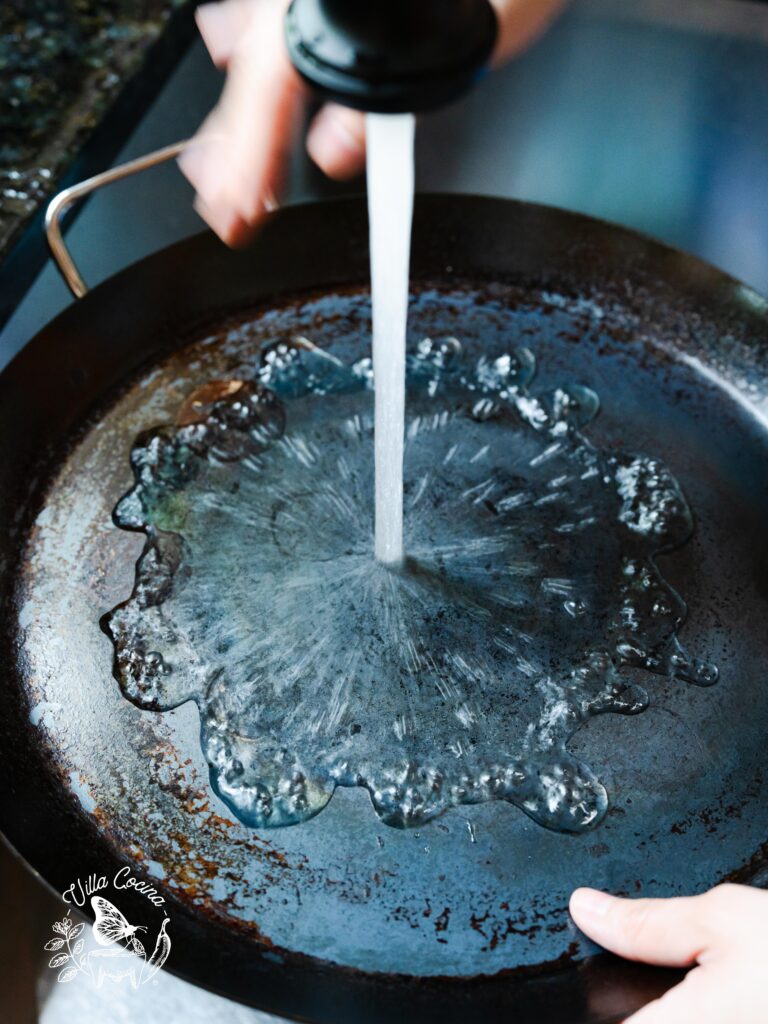
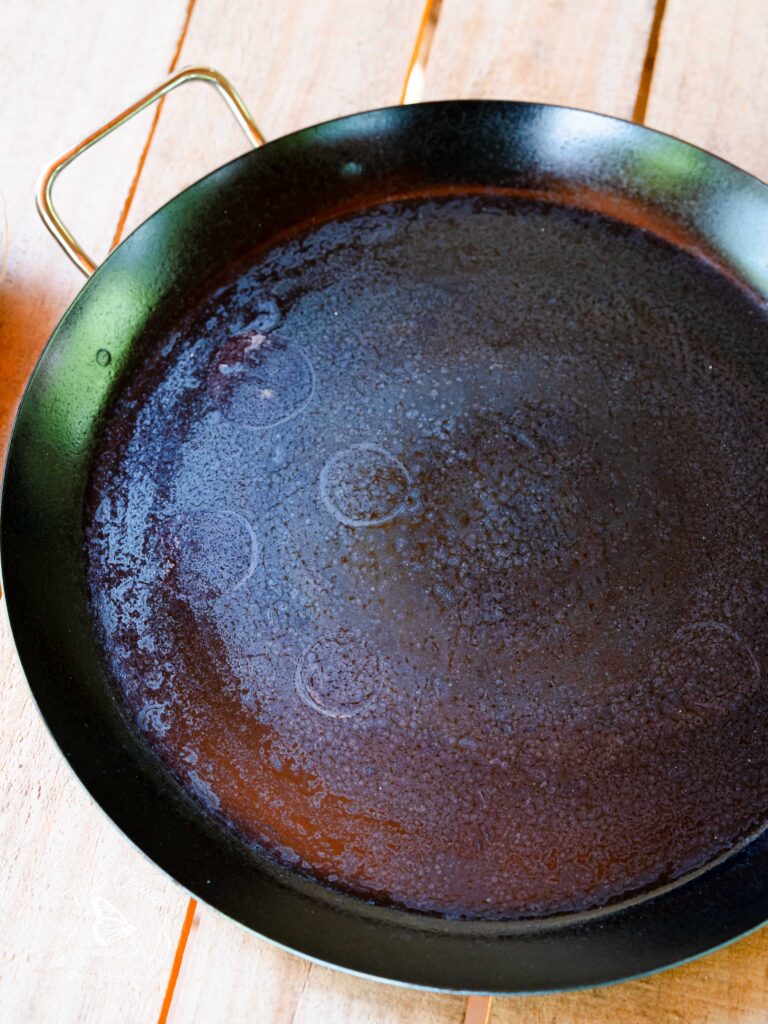
Removing Tough Residue
For really tough residue, try the oil, salt, and paper towel scrubbing technique first.
If still needed, place the comal over medium-low heat, add water to cover the bottom (only applicable to comals with raised edges or sides that can contain water), and let the water steam, loosening burnt bits.
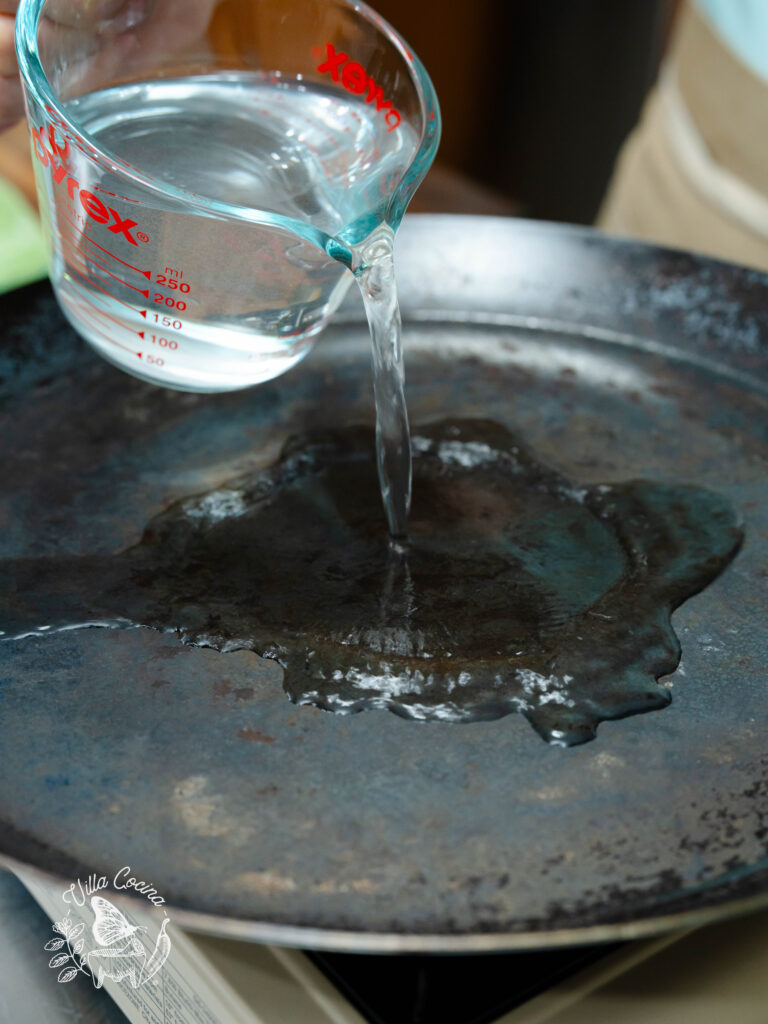
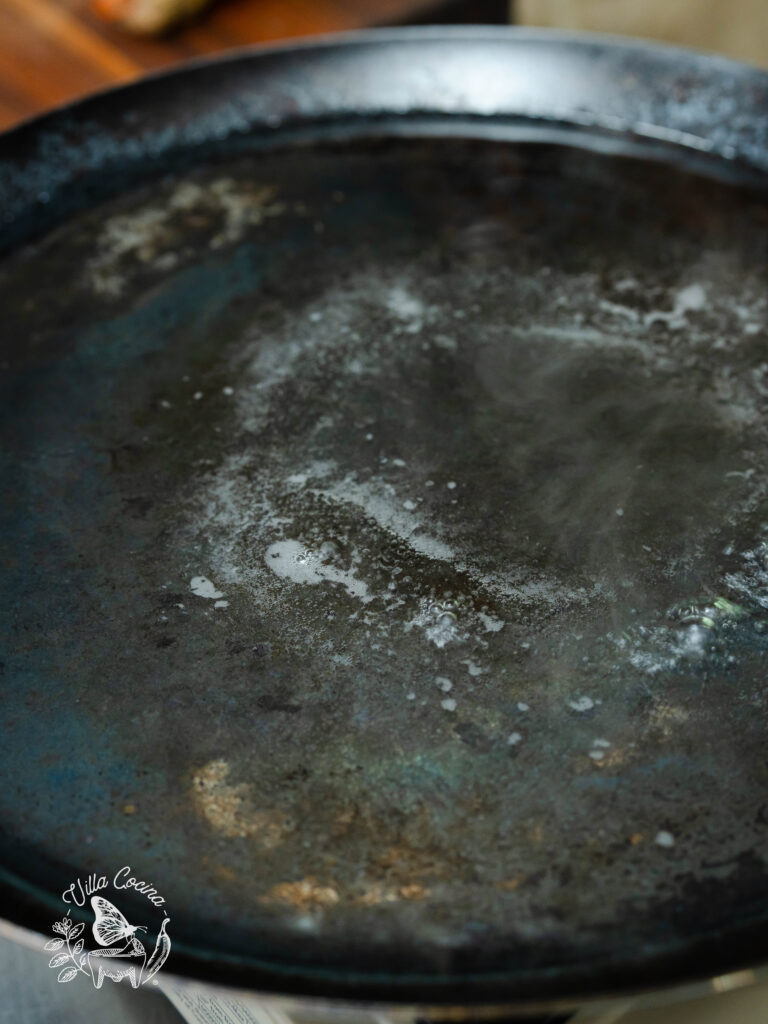
Scrub with an escobeta, wooden spoon, or a dish brush until they release. Turn off the heat and let the comal become warm. Then, carefully pour out the water.
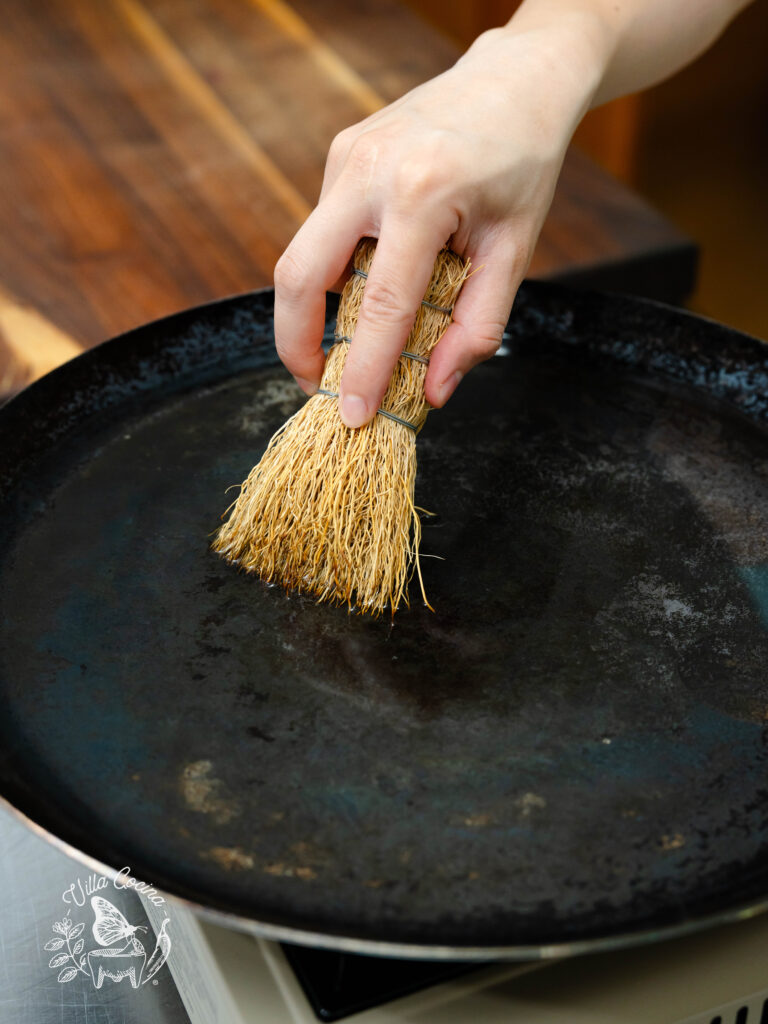
Note: If your comal does not have raised edges, take it to the sink and place it under running warm water, as warm as you can handle. Scrub the comal thoroughly until the residue loosens. Using dish gloves might help.
Rinse, dry completely using a towel, then heat over the burner as previously mentioned. Finally, apply a thin layer of oil to prevent rust, let it cool, and store it away.

Recipe Video Tutorial
Below is my easy to follow video tutorial on how to care for your Comal.
Enjoyed the video? Subscribe and tap the bell for updates on new recipes. Thank you for your support!
When to Re-Season
If, after removing all residue, the non-stick properties appear damaged, re-season your comal to restore its performance. This is more effective than just applying oil at the end, as it will fully restore the comal and continue to build up its non-stick surface.
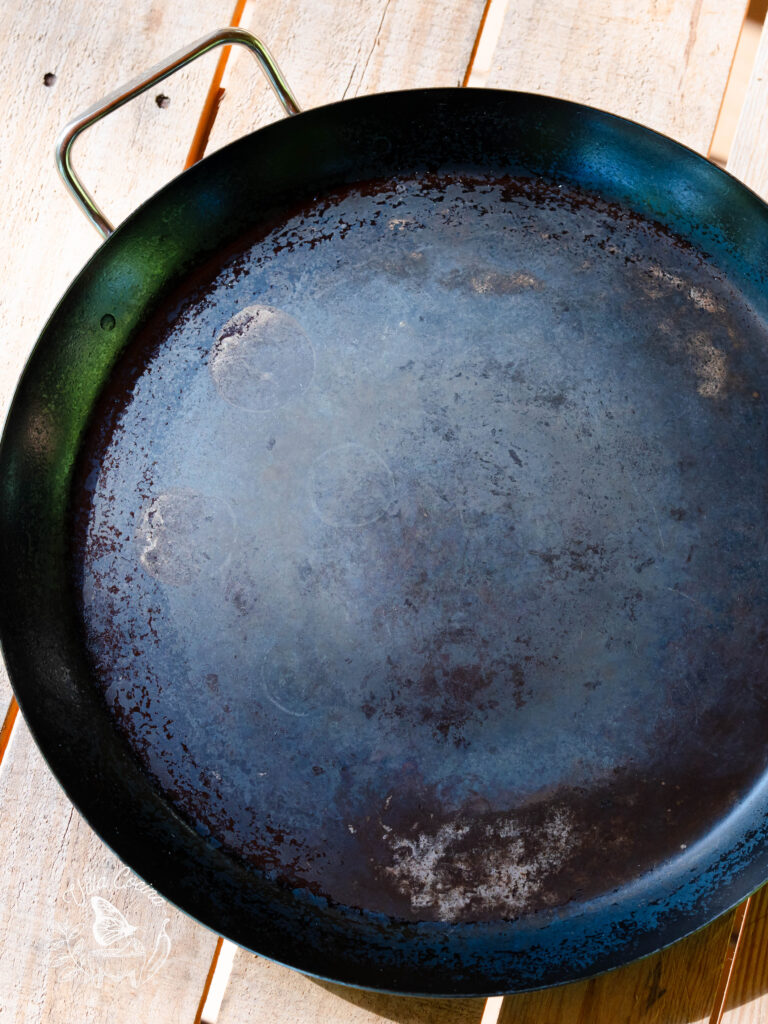
Useful Advice
- Carbon steel should never be soaked in water, as it can lead to rust and corrosion, causing the metal to weaken and deteriorate. This makes the material more susceptible to cracking or breaking.
- Avoid using an abrasive brush, as it can scratch the metal, damage the seasoning, and create a rough surface that’s more susceptible to rust and corrosion.
- Carbon steel should only be hand washed. Do not wash in the dishwasher.
- To maintain the comal’s quality, always ensure it is completely dry before storing. Keep it away from moisture and humid environments. Store in a cool, dry place.
Fatty Foods for a Better Season
Whenever possible, cook fatty foods like steak, burgers or bacon to enhance the seasoning on your carbon steel comal. The fatty acids in these foods help build up the seasoning, creating a non-stick surface and preventing rust.
If food starts to stick and some areas have noticeably lost their non-stick properties, you will need to re-season.
Recipes you can make with a Comal
- Mexican Sopes
- Tacos de Canasta
- Chile Relleno Casserole
- Authentic Enchiladas
- Roasted Tomatillo Salsa
- Green Salsa Taquera
- Roasted Garlic Guacamole
Shows That You Care
Owning a comal is like inheriting a treasured family heirloom. Mastering its use unlocks the secrets to authentic, mouthwatering Mexican cuisine, elevating your cooking experience. By caring for your comal, you demonstrate your passion for Mexican food and cooking, and the love you put into maintaining it shines through in every delicious dish you create.


Barbie
Hi Rosanna! I want to thank you for this amazing guide on seasoning and caring for your comal! I’ve read it so many times. As you know, I bought my first comal yesterday and I want to be fully prepared and armed with all the knowledge I need to keep it looking beautiful through the years. I can’t wait until it arrives. Again, thanks to you and Nelson for inspiring me to learn and making the process so easy and fun. Most of all, thank you for sharing your amazing, over-the-top, heavenly delicious food!
♥️😊😘
P.S. I wanted to give you a hundred stars but didn’t see them. But here you go fixed it.
⭐️🌟⭐️🌟⭐️🌟⭐️🌟⭐️🌟⭐️🌟⭐️
Villa Cocina
You are amazing! Blessings!
Barbie
Hey Girl! I have to tell you this. I spoke to Tony at Masienda and told him I got my link for my comal from you. I told him how great your channel is and he thanked me for letting him know so they can check it out. I’ve got a “small world” story. I work in a Hospital. I’ve known my boss for almost 20 years. She’s one of my best friends. But I did not know that she was born and raised in Michoacán! She’s one of the sweetest people I know. It all makes perfect sense now! Must be something about that area that produces these awesome people! Take care, sweetie. Hello Nelson!
Villa Cocina
Aw, thanks for putting in a good word for us! And please say hello to your boss for me! You sound amazing yourself – a very friendly person!
Dyn
So helpful. Thank you. Could you share info about the single gas burner you use please?
Villa Cocina
Hi there! Visit my Shop page to explore my recommended products, available through my Amazon storefront. As an Amazon Associate, I earn from qualifying purchases.